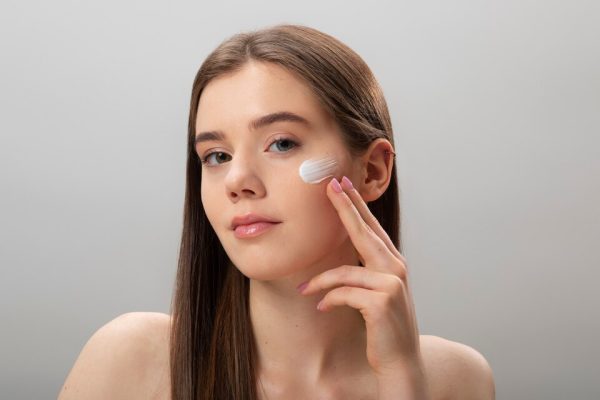In the quest for flawless skin, protection from the sun remains one of the most critical and yet frequently overlooked steps in daily skincare. Whether you’re walking to work, running errands, or lounging by the pool, sunscreen is a non-negotiable necessity that shields your skin from harmful UV rays, preventing premature aging, sunburns, and, more seriously, skin cancer. But for many, applying sunscreen can feel like a cumbersome, time-consuming task. In reality, proper sunscreen application doesn’t have to be complicated or time-consuming. By following a simple, efficient routine, you can ensure maximum protection with minimal effort. This step-by-step guide will help you master sunscreen use without the hassle, saving time while maintaining healthy skin.
Step 1: Choose the Right Sunscreen
The first step in any effective sunscreen routine is selecting the right product. While it may seem like a trivial decision, the sunscreen you choose will significantly impact both the efficacy and ease of use in your daily routine. The two primary types of sunscreen are chemical and physical (mineral) sunscreens.
Chemical sunscreens absorb UV rays through the skin and convert them into heat, which is then released from the body. They tend to feel lightweight and are often less visible on the skin, making them ideal for those who prefer a clear finish. Physical sunscreens, on the other hand, work by creating a physical barrier that reflects UV rays away from the skin. They tend to be thicker and can sometimes leave a white cast, but they are an excellent choice for sensitive skin or those prone to irritation.
To save time and ensure convenience, many people prefer broad-spectrum sunscreens with SPF 30 or higher. This ensures adequate protection against both UVA (aging) and UVB (burning) rays. Consider opting for a 2-in-1 product—sunscreens that also serve as moisturizers or foundations. This dual-purpose product not only reduces the number of layers you need to apply but also simplifies your routine, allowing you to protect your skin without added steps.
Step 2: Apply Sunscreen in the Morning, Even on Cloudy Days
While it may be tempting to skip sunscreen on overcast days, UV rays can penetrate through clouds and cause skin damage. Dermatologists recommend applying sunscreen every morning, regardless of the weather, as the skin is constantly exposed to UV rays—whether directly or indirectly.
To save time, make it part of your routine as soon as you wake up. Applying sunscreen before your makeup, or as the last step of your skincare routine, ensures that you’re protected from the moment you step outside. For convenience, consider a tinted sunscreen that can double as a light foundation for days when you want minimal makeup, effectively saving you time during your morning routine.
Step 3: Use the Correct Amount of Sunscreen
One of the most common mistakes people make when using sunscreen is not applying enough. To ensure full protection, dermatologists recommend using about one ounce of sunscreen, roughly the size of a shot glass, for covering your entire body. However, for your face and neck, a smaller amount will suffice—usually around a nickel-sized dollop (about ½ teaspoon).
If you’re using a sunscreen that doubles as a moisturizer or foundation, you may find that it’s easier to achieve the right amount without the need for multiple layers. Simply ensure that your skin is evenly covered and that no spots are left exposed. Applying sunscreen in a thin, even layer is key; overly thick layers may feel heavy or greasy, while sparse coverage can leave you unprotected.
Step 4: Apply Sunscreen to All Exposed Areas
While it’s tempting to focus only on your face, be sure to apply sunscreen to all areas that will be exposed to the sun. This includes the ears, neck, chest, hands, and even the tops of your feet. It’s easy to forget these areas, but they are just as vulnerable to sun damage. If you’re wearing clothing with short sleeves or shorts, don’t neglect your arms and legs. For convenience, consider a sunscreen stick or a spray for quick and easy application on hard-to-reach areas or areas that require frequent reapplication.
For those who are always on the go, a sunscreen spray can save time, as it requires minimal rubbing in and is easy to apply while multitasking. Simply spritz it on and go, and you’re ready to face the day with confidence.
Step 5: Let It Absorb
Once you’ve applied your sunscreen, allow it a few minutes to absorb into the skin before getting dressed or applying makeup. Sunscreens, particularly physical ones, need time to create an effective barrier. This step doesn’t need to take long—just about 3 to 5 minutes—which can be a quick opportunity to brush your teeth or organize your bag for the day.
If you’re in a rush, consider using a sunscreen that absorbs quickly without leaving a greasy or sticky residue. Many modern sunscreens are formulated with fast-drying, lightweight textures, making the waiting time barely noticeable.
Step 6: Reapply Every Two Hours
While applying sunscreen in the morning is essential, reapplying it throughout the day is equally important to maintain adequate protection. Sunscreen can wear off due to sweat, swimming, or even simple friction from touching the skin. This doesn’t mean you need to stop everything to reapply—it’s possible to do so quickly and without fuss.
To save time during the day, consider keeping a sunscreen stick or spray in your bag for quick and easy reapplication. These products are ideal for on-the-go use, and the non-greasy formulas make them convenient for reapplying over makeup without disturbing your look. If you prefer a more thorough approach, set a reminder on your phone to reapply every two hours, ensuring that you maintain optimal protection all day long.
Step 7: Don’t Forget the Lips and Eyes
Often overlooked, the lips and eyes are highly susceptible to sun damage. To protect these sensitive areas, use a lip balm with SPF, and choose a broad-spectrum sunscreen specifically designed for the delicate skin around your eyes. There are now sunscreen-infused eye creams and lip balms with SPF available, which can easily be integrated into your skincare routine without adding extra time. By applying these products as part of your sunscreen regimen, you ensure complete protection with minimal effort.
Step 8: Be Consistent and Efficient
Ultimately, the key to saving time with sunscreen use lies in consistency and efficiency. By selecting multi-tasking products, such as sunscreens that also provide moisturizing or foundation benefits, and by integrating sunscreen into your daily routine, you can protect your skin with minimal disruption. Whether you’re at home or out running errands, remember that it’s the small, consistent habits that lead to long-term results.
Conclusion
Applying sunscreen is one of the most vital steps in protecting your skin from the harmful effects of UV radiation, but it doesn’t have to be a time-consuming or complicated process. By selecting the right products, applying sunscreen efficiently, and integrating it into your daily routine, you can ensure maximum protection without sacrificing precious time. By committing to these straightforward steps, you’ll enjoy beautiful, healthy skin while saving time each morning. The effort is minimal, but the benefits are undeniable—protection against premature aging, sunburns, and even skin cancer. Protect your skin now, and thank yourself later.





